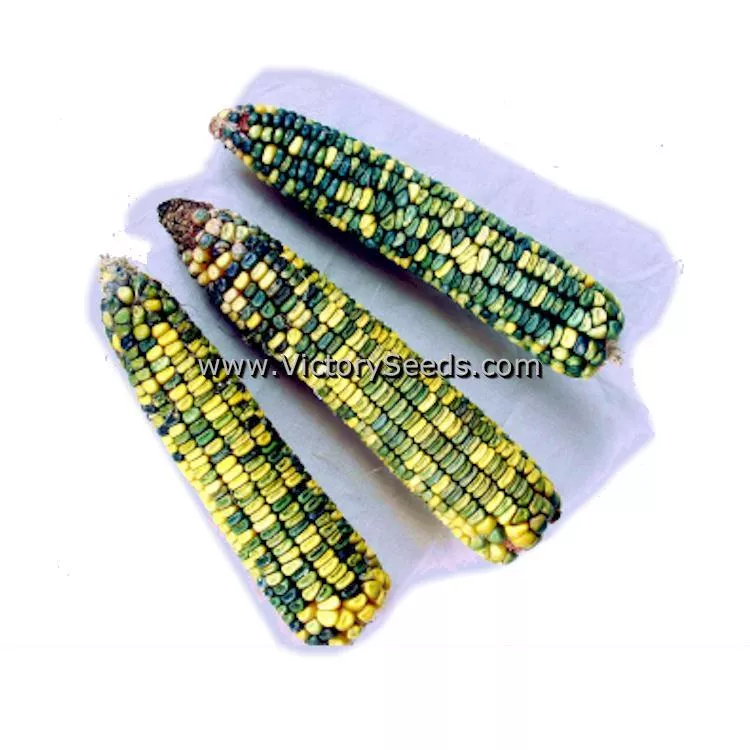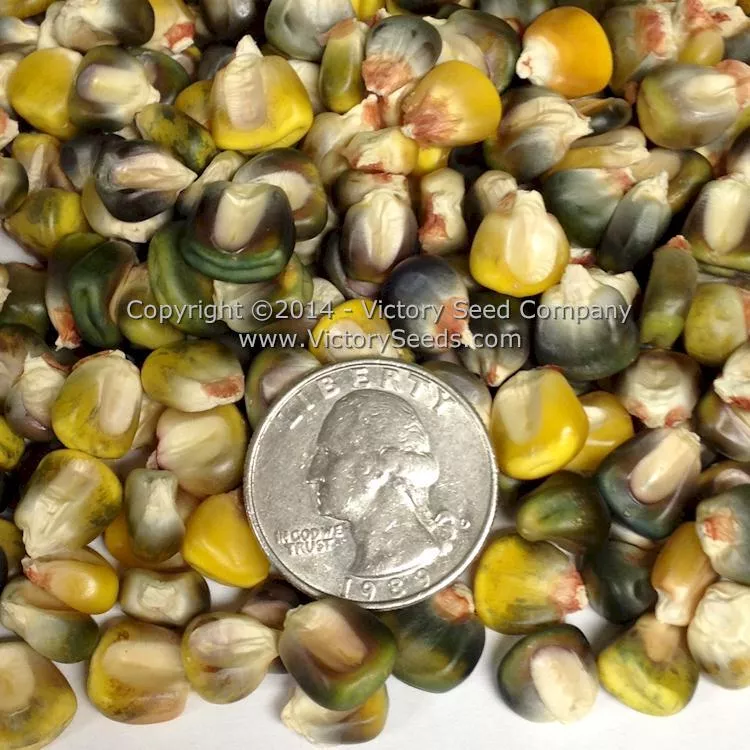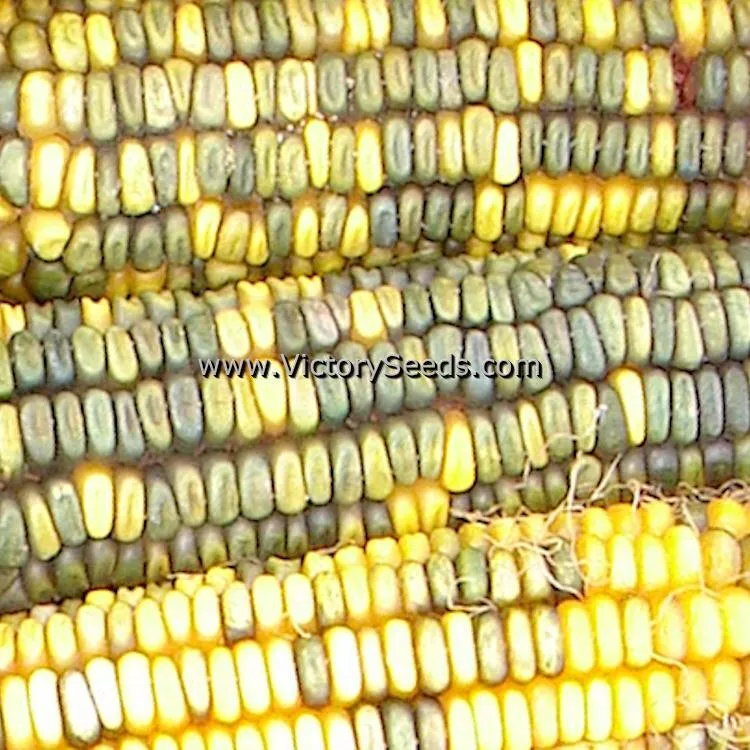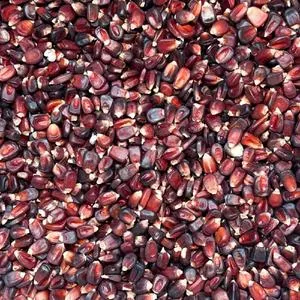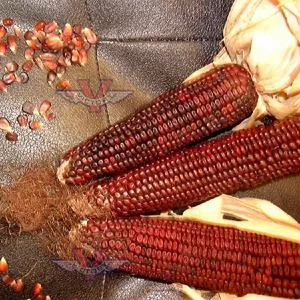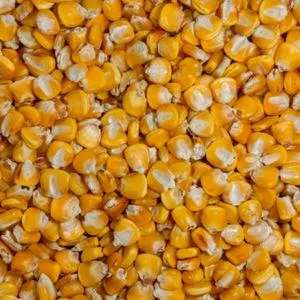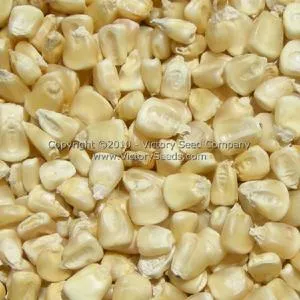


Green & Gold Dent Corn
Zea mays subsp. mays
Price: $3.99
SKU: 314040195 to 100 days - Although this dent corn variety can be ground for feed or flour, it is primarily grown by home gardeners and market growers for its unique, ornamental value. Green corn kernels are actually fairly uncommon.
The ears are large with a mix of bright green and golden-yellow kernels making it a popular novelty item with fans of a certain American tractor brand or the NFL team in Green Bay, Wisconsin. Green and Gold, or Green and Yellow, are also the school colors for many colleges, universities, and high schools, around the country. They are even the colors of our founder's high school alma mater in Petaluma, California (go Casa Grande Gauchos!)
'Green and Gold Dent' is a selection of 'Oaxacan Green' dent corn made by Bisek Gardens in Minnesota.
The ears are large with a mix of bright green and golden-yellow kernels making it a popular novelty item with fans of a certain American tractor brand or the NFL team in Green Bay, Wisconsin. Green and Gold, or Green and Yellow, are also the school colors for many colleges, universities, and high schools, around the country. They are even the colors of our founder's high school alma mater in Petaluma, California (go Casa Grande Gauchos!)
'Green and Gold Dent' is a selection of 'Oaxacan Green' dent corn made by Bisek Gardens in Minnesota.
Planting Instructions:
Soil must be at least 65ºF to germinate. Be patient and do not plant too early or you will waste a lot of seed! Plant in full sun and keep it watered. Corn is a wind-pollinated plant. Plant in blocks several rows wide to ensure full ears.
Sow seeds about 1½ to 2½ inch deep, 3 to 4 inches apart, in rows spaced 24 to 30 inches apart. Thin to 6 to 12 inches apart.
Harvest Information:
Pick the ears for dry grain or decoration when the husks are dry and the kernels are hard enough that you cannot make a dent in them with your fingernail. Many people pick the ears too early when kernels are still soft. If this is done they shrivel up and shrink and their beauty is destroyed. They cannot finish maturing once they have been picked.
Even though the ears look dry, there remains moisture deep within the cob. If you were to enclose them in a box, the moisture would cause them to sour and mold. You may let them dry longer on the plants if neither weather nor predators are damaging them. Otherwise hang them up or lay them out in the open until they are completely dry inside.
Sow seeds about 1½ to 2½ inch deep, 3 to 4 inches apart, in rows spaced 24 to 30 inches apart. Thin to 6 to 12 inches apart.
Harvest Information:
Pick the ears for dry grain or decoration when the husks are dry and the kernels are hard enough that you cannot make a dent in them with your fingernail. Many people pick the ears too early when kernels are still soft. If this is done they shrivel up and shrink and their beauty is destroyed. They cannot finish maturing once they have been picked.
Even though the ears look dry, there remains moisture deep within the cob. If you were to enclose them in a box, the moisture would cause them to sour and mold. You may let them dry longer on the plants if neither weather nor predators are damaging them. Otherwise hang them up or lay them out in the open until they are completely dry inside.
Some Colleges and Universities with these school colors:
Siena College, University of Alaska, Arkansas Tech University, Colorado State University (Fort Collins), University of South Florida, Southeastern Louisiana University, North Dakota State University, University of Oregon, Baylor University, College of William and Mary, and George Mason University.
Don't see your school on this list? Let us know!
Siena College, University of Alaska, Arkansas Tech University, Colorado State University (Fort Collins), University of South Florida, Southeastern Louisiana University, North Dakota State University, University of Oregon, Baylor University, College of William and Mary, and George Mason University.
Don't see your school on this list? Let us know!
Customer Reviews:
Do you have experience with this one? 📝 📣 Write a review!
No reviews have been posted yet.

